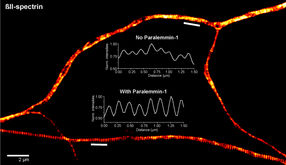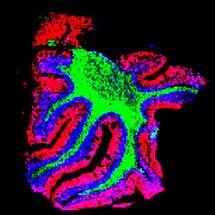Stem Cell Clones Could Yield New Drug Treatment for Deadly Blood Disease
Scientists report in the current issue of STEM CELLS Translational Medicine that they have been able to clone a line of defective stem cells behind a rare, but devastating disease called Fanconi Anemia (FA). Their achievement opens the door to drug screening and the potential for a new, safe treatment for this often fatal disease.
FA is a hereditary blood disorder that leads to bone marrow failure (FA-BMF) and cancer. Patients who suffer from FA have a life expectancy of 33 years. Currently, a bone marrow transplant offers the only possibility for a cure. However, this treatment has many risks associated with it, especially for FA patients due to their extreme sensitivity to radiation and chemotherapy.
“Although various consequences in hematopoietic stem cells (the cells that give rise to all the other blood cells) have been attributed to FA-BMF, its cause is still unknown,” said Megumu K. Saito, M.D., Ph.D., of Kyoto University’s Center for iPS Cell and Application, and a lead investigator on the study. His laboratory specializes in studying the kinds of pediatric diseases in which a thorough analysis using mouse models or cultured cell lines is not feasible, so they apply disease-specific induced pluripotent stem cells (iPSCs) instead.
“To address the FA issue,” he explained, “our team (including colleagues from Tokai University School of Medicine) established iPSCs from two FA patients who have the FANCA gene mutation that is typical in FA. We were then able to obtain fetal type immature blood cells from these iPSCs.”
When observing the iPSCs, the researchers found that the characteristics of immature blood cells from FA-iPSCs were different from control cells. The FA-iPSCs showed an increased DNA double-strand break rate, as well as a sharp reduction of hematopoietic stem cells compared to the control group of non-FA iPSCs.
“These data indicate that the hematopoietic consequences in FA patients originate from the earliest hematopoietic stage and highlight the potential usefulness of iPSC technology for explaining how FA-BMF occurs,” said Dr. Saito. “Since conducting a comprehensive analysis of patient-derived affected stem cells is not feasible without iPSC technology, the technology provides an unprecedented opportunity to gain further insight into this disease.”
“This work shows promise for identifying the initial pathological event that causes the disease, which would be a first step in working toward a cure,” said Anthony Atala, M.D., Editor-in-Chief of STEM CELLS Translational Medicine and director of the Wake Forest Institute for Regenerative Medicine.
Original publication
"Pluripotent cell models of Fanconi anemia identify the early pathological defect in human hemoangiogenic progenitors.”; STEM CELLS Translational Medicine.
Original publication
"Pluripotent cell models of Fanconi anemia identify the early pathological defect in human hemoangiogenic progenitors.”; STEM CELLS Translational Medicine.
Organizations
Other news from the department science

Get the life science industry in your inbox
By submitting this form you agree that LUMITOS AG will send you the newsletter(s) selected above by email. Your data will not be passed on to third parties. Your data will be stored and processed in accordance with our data protection regulations. LUMITOS may contact you by email for the purpose of advertising or market and opinion surveys. You can revoke your consent at any time without giving reasons to LUMITOS AG, Ernst-Augustin-Str. 2, 12489 Berlin, Germany or by e-mail at revoke@lumitos.com with effect for the future. In addition, each email contains a link to unsubscribe from the corresponding newsletter.





















































